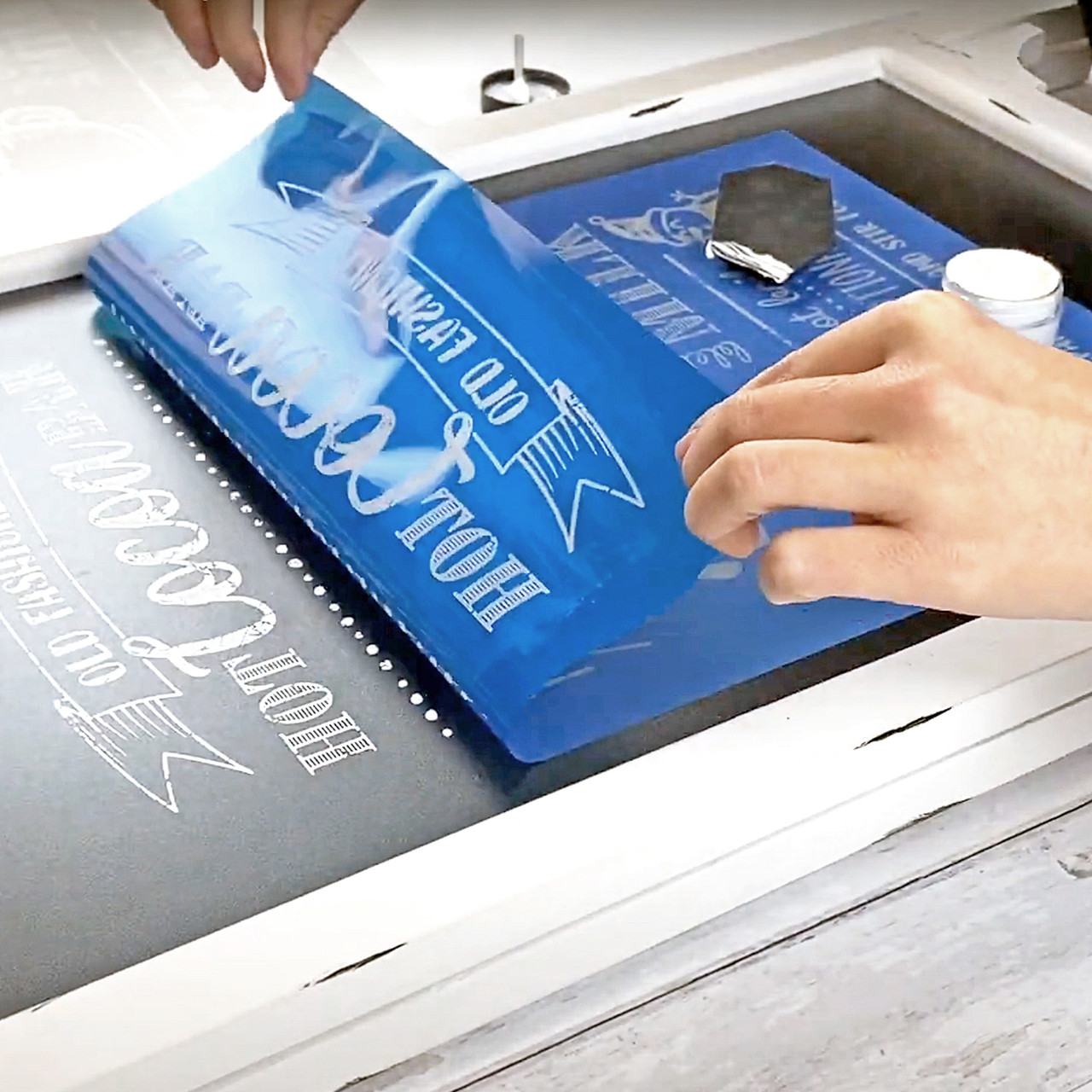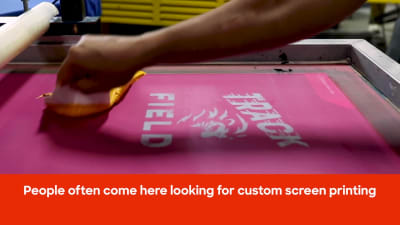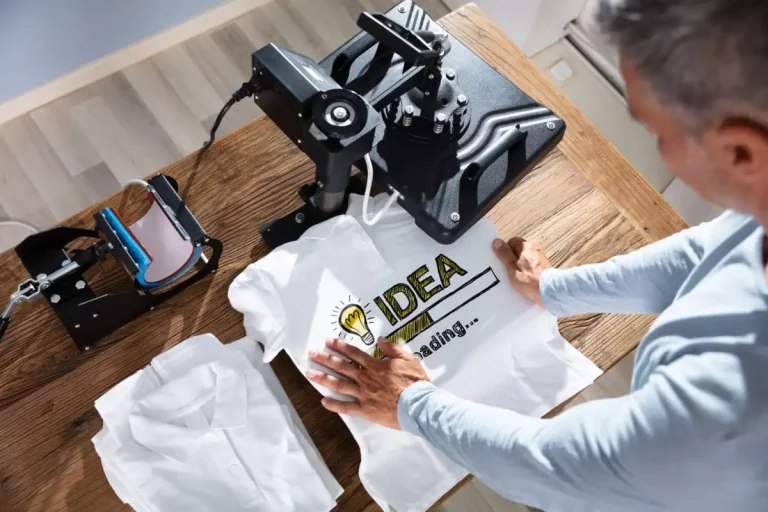Professional Screen Printing Kit for Custom Apparel
Display Printing Uncovered: Everything You Need to Learn About T-Shirt and Garment Printing Techniques
If you've ever questioned exactly how those vivid styles finish up on your favorite t-shirts, you're in the right place. Display printing is a remarkable technique that combines art with strategy, supplying countless opportunities for creative thinking. Understanding the fundamentals, from devices to ink selections, can considerably impact your results. Ready to check out the vital elements that make screen printing an art form? Let's reveal the information that can elevate your jobs.
The Fundamentals of Screen Printing: Exactly How It Functions
When you dive right into screen printing, you'll uncover it's both an art and a science. At its core, screen printing entails producing a stencil, or screen, that allows ink to go through just in details areas (screen printing kit). You start by picking your design and preparing your display with a light-sensitive solution. When you reveal this emulsion to light, it sets, leaving your style as a negative room.
Next, you'll blend your inks and prepare your printing surface area. Placement the screen over the textile, then utilize a squeegee to push ink with the display onto the garment. This procedure calls for precision, as you desire clear, vivid prints. After printing, you'll cure the ink with heat, guaranteeing it abides by the material and lasts through cleans. Each step is vital, and understanding them will certainly boost your display printing skills, transforming straightforward garments right into one-of-a-kind, meaningful pieces.
Sorts Of Display Printing Strategies
Once you realize the essentials of screen printing, it's time to explore the various techniques that can elevate your layouts. One preferred approach is conventional screen printing, where ink is pushed with a stenciled display. This technique is terrific for strong, vibrant colors. After that there's water-based ink printing, which supplies a softer feel and is environmentally friendly, yet it needs a various approach to healing.
If you're aiming for fine information, think about discharge printing. This strategy removes color from the textile, leaving a soft, vintage look. Another choice is plastisol printing, understood for its toughness and dazzling shades, making it a favorite for many brand names. Experiment with halftone printing to develop slope impacts and elaborate layouts. Each technique has its special charm, so don't hesitate to try them bent on locate what fits your style best!
Essential Devices for Display Printing
To attain stunning outcomes in screen printing, having the appropriate devices is basic. You'll need a sturdy screen printing structure, which holds the mesh that transfers your style onto the garment. Next off, purchase top notch squeegees; these are important for applying ink uniformly across the display. You'll also require a great exposure device to develop your displays, in addition to a washout cubicle for cleansing them after usage. A reputable warmth source, like a conveyor dryer or warmth press, is crucial for treating your prints to ensure durability. Do not forget a correct workspace, outfitted with tables and storage for your materials. Protective gear, such as masks and gloves, will certainly keep you secure from chemicals and inks. With the right devices, you'll be well on your way to creating professional-quality prints.
Choosing the Right Inks and Products
When picking inks and materials for display printing, you require to take into consideration the kind of ink that functions finest for your project. Think concerning material compatibility to assure your styles look excellent and last long. Additionally, check out green ink options to make your printing procedure much more sustainable.
Sorts Of Display Inks
Picking the appropriate screen ink is crucial for attaining vivid, sturdy prints that fulfill your project's requirements. There are a number of types of screen inks to check out. Specialized inks, such as glow-in-the-dark or metal, can add distinct impacts to your styles.

Textile Compatibility Factors To Consider
Understanding material compatibility is important for accomplishing high-grade display prints, especially since various products react distinctively to various inks. When selecting inks, take into consideration the fabric kind-- cotton, polyester, or blends. For cotton, water-based inks work well, using softness and breathability. Polyester, on the other hand, typically calls for plastisol inks for much better bond and vivid colors. You may require to make use of a mix of both types if you're publishing on blends. Always check your inks on example fabric to guarantee they stick properly and maintain color honesty. Additionally, maintain in mind that material weight and structure can impact the last result, so choosing the best ink and product combination is essential for your job's success.
Eco-Friendly Ink Options
Environment-friendly inks are coming to be a popular selection for screen printers who desire to reduce their ecological impact while keeping top quality. When choosing inks, take into consideration water-based inks, which are much less damaging and less complicated to tidy up compared to conventional solvents. These inks bond well with textiles, delivering dynamic results without toxic chemicals. You might additionally check out eco-solvent inks that make use of less volatile organic substances (VOCs), making them a safer alternative for both your wellness and the planet.
Furthermore, try to find inks made from sustainable resources, such as soy or vegetable-based choices. By selecting the right inks and materials, you'll not just produce stunning layouts but additionally add to a much more sustainable printing procedure. Make the switch, and your prints will certainly mirror your commitment to the environment!
Preparing Your Layout for Screen Printing

File Layout Demands
To assure your style looks lively and sharp on material, you'll require to pay very close attention to submit style demands for screen printing. Start with vector data like AI or EPS, as they can be scaled without shedding quality. If you make use of raster images, select high-resolution files, such as TIFF or PNG, ideally at 300 DPI. Avoid using JPEGs, as they YOURURL.com can lose clearness when get redirected here resized. Make certain your layout has a clear history to avoid unwanted white edges on your prints. Maintain color modes in mind; CMYK is conventional for display printing, so convert your RGB makes appropriately - screen printing kit. By adhering to these guidelines, you'll establish your artwork up for an effective print.
Shade Splitting Up Techniques
Shade separation is a crucial step in preparing your layout for display printing, and understanding it can significantly enhance your print quality. You'll require to damage your design right into specific shades, as each color requires a different screen during printing. This accuracy not just assures accurate color representation however likewise simplifies the printing process.
Resolution and Dimension
Accomplishing the very best cause screen printing begins with assuring your layout has the appropriate resolution and dimension. Preferably, your art work ought to be at least 300 DPI (dots per inch) for sharp, clear prints. Your last item could look pixelated and less than professional. if you make use of reduced resolution.
When it comes to dimension, consider the measurements of your print area. Design your art work to match the last print size, preferably creating it in the real dimensions you'll be publishing. By doing this, you'll stay clear of any type of unforeseen scaling issues.
Constantly examine your design in both vector and raster layouts. Vector graphics can be scaled without shedding high quality, making them suitable for display printing. Preparing properly will ensure your design looks amazing on every garment!
Step-by-Step Display Printing Refine
Display printing is a vibrant process that enables you to develop dynamic styles on numerous surfaces. To obtain started, you'll require a screen, solution, and your chosen ink. First, prepare your screen by cleansing it completely. Next off, apply the solution evenly and let it completely dry in a dark location. As soon as dry, expose your display to light with your design put on it, which will harden the solution where the light hits, developing a stencil - screen printing kit.
Pour ink onto the display and Continued use a squeegee to press the ink through the pattern onto the fabric. Lift the screen carefully and let the print completely dry. You've efficiently display printed your layout.
Tips for Effective Display Printing Projects
While you're diving right into your screen printing tasks, keep in mind that prep work is crucial to success. Beginning by gathering all your products-- inks, squeegees, screens, and garments. A tidy work area helps prevent unwanted errors, so neat up before you begin.
Next, confirm your art work is high-resolution and correctly sized for your garment. Test your display for proper direct exposure and clean it thoroughly to stay clear of spots. When blending your inks, comply with the supplier's standards to achieve the appropriate consistency.
Throughout printing, use also pressure with your squeegee for regular outcomes. Do not hurry; take your time to validate each print meets your standards. After printing, allow your garments dry totally prior to managing or packaging them.
Lastly, constantly keep an example of your work for future referral. This means, you can examine your development and boost your methods gradually. Happy printing!

Often Asked Concerns
For how long Does It Require To Establish a Screen Printing Task?
Establishing a display printing task commonly takes around thirty minutes to an hour. You'll prepare the screens, mix inks, and adjust the press. The moment varies based upon intricacy and experience, so remain arranged!
Can I Print on Different Material Keys In Using the Same Strategy?
Yes, you can publish on different material kinds using the exact same technique, but you'll require to adjust your inks and settings. Some textiles take in ink in different ways, so exploring guarantees the finest outcomes for each and every product.
What Prevail Blunders to Stay Clear Of in Screen Printing?
When screen printing, stay clear of common blunders like utilizing the incorrect ink, ignoring appropriate exposure times, or skipping pre-press checks. Constantly evaluate your setup and keep tidy displays to guarantee top quality outcomes each time.
How Can I Correctly Clean and Maintain My Screen Printing Equipment?
To appropriately tidy and preserve your screen printing equipment, you must frequently clean screens with ideal solvents, check mops for wear, and guarantee all tools are saved dry and dust-free. Consistency avoids expensive fixings and boosts performance.
Is Display Printing Eco-friendly Contrasted to Other Approaches?
Screen printing can be much more environmentally friendly than various other approaches, specifically if you utilize water-based inks and eco-conscious materials. By picking lasting materials and practices, you minimize waste and minimize your influence on the planet.
Display Printing Uncovered: Everything You Required to Know Concerning T-Shirt and Garment Printing Strategies
At its core, display printing entails creating a stencil, or screen, that permits ink to pass through only in particular locations. Position the display over the textile, after that use a squeegee to push ink via the screen onto the garment. One popular approach is conventional screen printing, where ink is pressed through a stenciled screen.When selecting inks and materials for screen printing, you require to take into account the type of ink that functions ideal for your project.